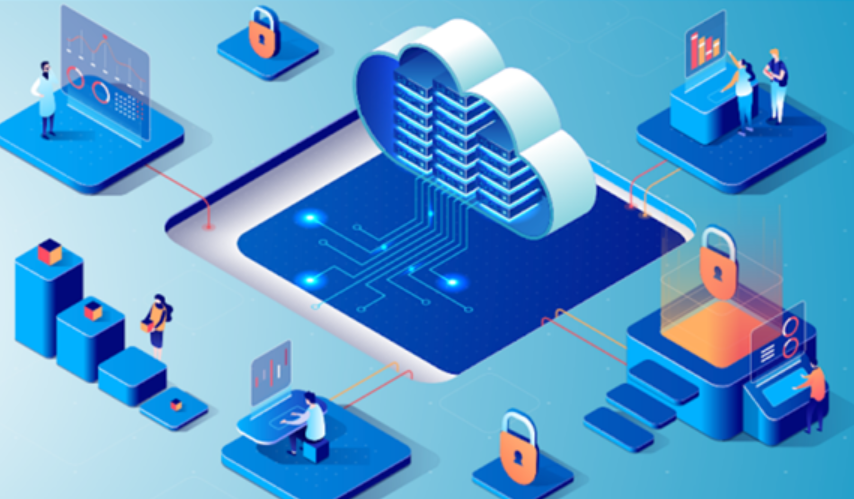By Christos Flessas
Data is the lifeblood of any organization. From sensitive customer information to proprietary company secrets, from patients’ data to financial records, safeguarding this valuable asset is paramount. Data breaches can be devastating, resulting in financial losses, reputational damage, and legal consequences.
Today, data is an asset and liability when not adequately protected from the increased in frequency and intensity cybercrime. Organizations turn to Data Loss Prevention (DLP) solutions to combat these threats and protect sensitive data. Implementing a robust DLP solution is not an option but a necessity for any organization serious about its data security.
Key Objectives
Cloud technology and consolidated hybrid work models disperse operations and data as it is moved, stored, and accessed from highly distributed locations. Cybercriminals go for data, no matter the size and sector of a business. All businesses are lucrative targets for bad actors – exogenous or indigenous – and shall implement adequate DLP strategies to minimize the cyber threats, protect their data, and mitigate the impact of a cyber incident.
DLP is a comprehensive approach that protects sensitive information from unauthorized access, sharing, exposure, or loss. DLP solutions are designed to monitor, detect, and prevent data breaches in real time. They ensure regulatory compliance and are crucial for any organization, as data breaches can have severe consequences, ranging from financial loss and legal liabilities to operations disruption.
The primary objectives of a robust DLP solution are:
- Data Visibility: DLP solutions provide organizations with a broad view of their data, helping them identify sensitive information, its location, and its use.
- Data Monitoring and Protection: DLP tools constantly monitor data flows and user activities to detect and respond to suspicious or unauthorized activities, intentional or accidental.
- Policy Enforcement and Compliance: DLP solutions enforce data security policies by blocking or alerting upon policy violations and maintaining compliance with industry regulations.
- Incident Response: DLP capabilities and tools help organizations respond swiftly to data breaches by providing real-time alerts and incident analysis. Incorporating machine learning and AI technology enables DLP solutions to adapt to emerging cybersecurity threats, ensuring continued data protection.
- Cost Reduction: DLP solutions can help organizations avoid costly data breaches, legal penalties, and reputation damage, ultimately saving them money in the long run.
Common Features
To adequately serve their cybersecurity purposes, DLP solutions have common features, a bouquet of tools and processes to use against cybercrime. These characteristics can be grouped into the following DLP features, which make them indispensable in today’s cybersecurity landscape:
- Content Discovery and Classification: Know what to protect. DLP solutions employ content discovery and classification techniques to scan and categorize data based on predefined criteria, such as keywords, regular expressions, file types, and context analysis. Organizations can prioritize protection efforts and tailor policies to specific data types by classifying data.
- Policy-Based Controls: DLP solutions enable organizations to define and enforce data security policies. These policies dictate how data should be handled, who can access it, and under what conditions. Policy-based controls include data encryption, access controls to restrict data access, and data quarantine or blocking to prohibit data transmission when a potential policy violation is detected.
- User and Entity Behavior Analytics (UEBA): Understanding user behavior is crucial for early warning detection of insider threats and unauthorized data access. UEBA capabilities monitor user activities and establish a baseline of normal behavior. When deviations occur, the system triggers alerts for further investigation.
- Data Monitoring and Leakage Prevention: DLP solutions continuously monitor organizational data flows. They analyze data movements both inside and outside the corporate network. When suspicious activities are detected, the system can immediately block the transmission and notify the security team.
- Data Masking and Redaction: Data masking and redaction techniques protect sensitive information without impeding legitimate use. DLP solutions can automatically mask or redact specific data elements within documents or files. For example, a DLP system can replace credit card numbers with asterisks in a document while allowing authorized users to access the rest of the information.
- Endpoint Protection: With the proliferation of remote and hybrid work, endpoint protection is more critical than ever. DLP solutions often include endpoint agents that extend security policies to individual devices, ensuring that sensitive data remains protected, whether stored on a corporate laptop or accessed via a mobile device.
- Cloud Integration: As organizations increasingly adopt cloud services, DLP solutions have evolved to offer seamless cloud integration. This enables consistent data protection policies across on-premises and cloud environments. DLP solutions can scan data uploaded to cloud storage, detect policy violations, and enforce security measures while allowing the flexibility of cloud collaboration.
- Incident Management and Reporting: DLP solutions provide incident management and reporting capabilities in case of a data breach or policy violation. This includes notifying relevant personnel, facilitating a swift response to mitigate potential damage, and generating detailed incident reports, as incident data is crucial for post-incident analysis and regulatory compliance.
- Integration with SIEM Systems: Security Information and Event Management (SIEM) systems are vital in aggregating and analyzing security data from various sources. DLP solutions often integrate with SIEM platforms, allowing security teams to correlate DLP alerts with other security events for a more comprehensive view of potential threats.
- Data Loss Prevention, Education, and Training: The human factor remains a significant challenge in data security. DLP solutions can support education and training by providing real-time feedback and guidance when employees interact with sensitive data. This helps raise awareness and reduces the risk of unintentional data breaches.
Stay ahead of cyber threats
DLP solutions are a cornerstone of modern cybersecurity strategies. They provide organizations with the tools and capabilities to safeguard their most valuable asset: data. From content discovery and classification to incident management and reporting, DLP solutions offer a comprehensive approach to data protection.
As cyber threats evolve, DLP solutions will be critical in helping organizations detect and address malicious external and internal acts. By investing in robust DLP solutions and implementing best practices, organizations can minimize the risk of data breaches, protect their reputation, and ensure compliance with data privacy regulations.
About the Author:Christos Flessas is a Communications and Information Systems Engineer with more than 30 years of experience as an Officer of the Hellenic Air Force (HAF). He is an accredited NATO tactical evaluator in the Communication and Information Systems (CIS) area and the National Representative (NatRep) at Signal Intelligence CIS and at Navigation Warfare (NavWar) Wrking Groups. Christos holds an MSc in Guided Weapon Systems from Cranfield University, UK. He has also attended numerous online courses such as the Palo Alto Networks Academy Cybersecurity Foundation course. His experience covers a wide range of assignments including radar maintenance engineer, software developer for airborne radars, IT systems manager and Project Manager implementing major armament contracts.
Christos is intrigued by new challenges, open minded, and excited for exploring the impact of cybersecurity on industrial, critical infrastructure, telecommunications, financial, aviation, and maritime sectors.








